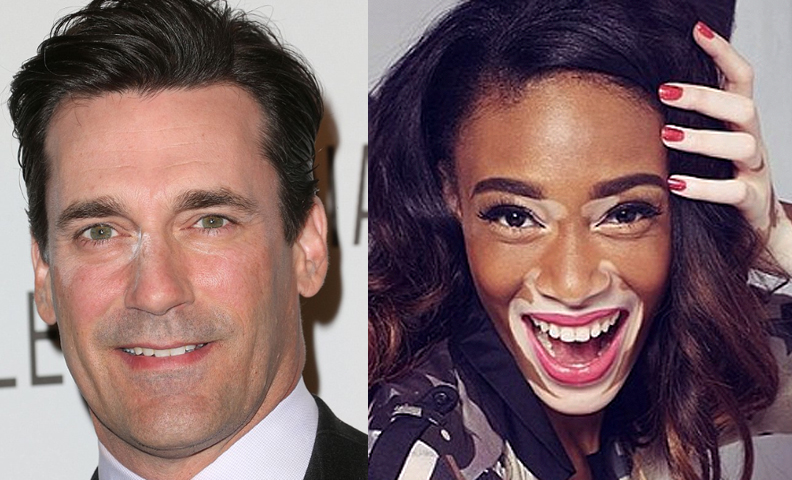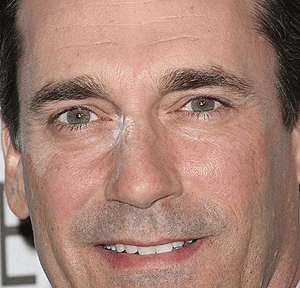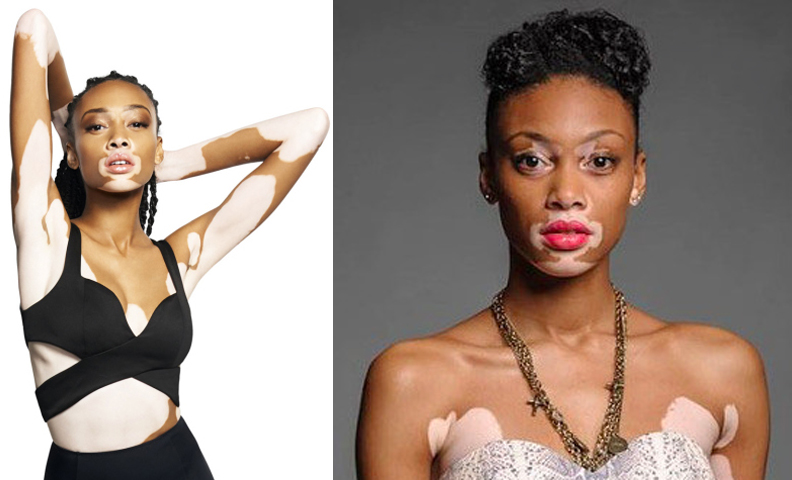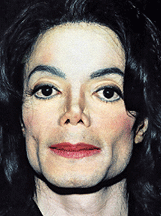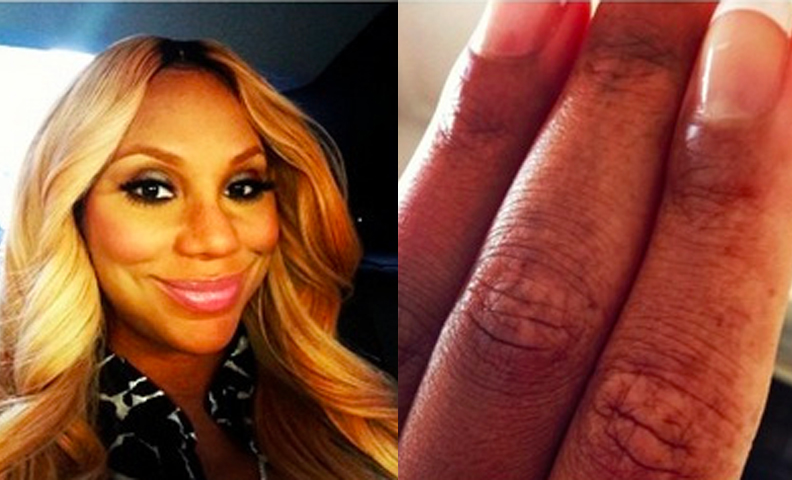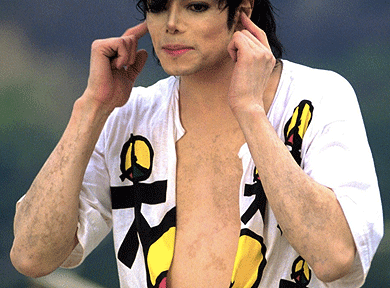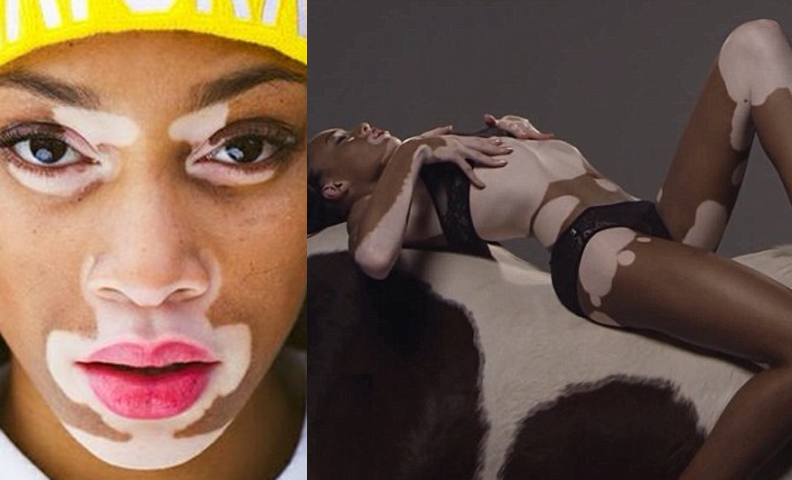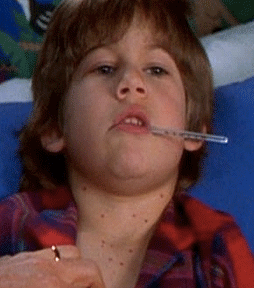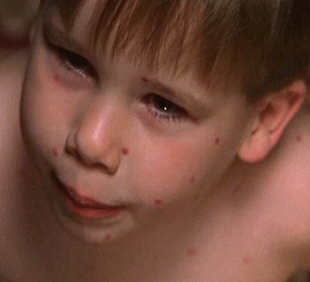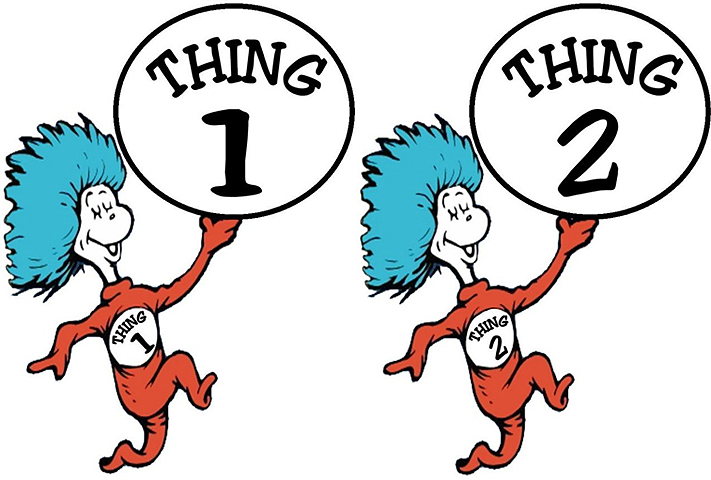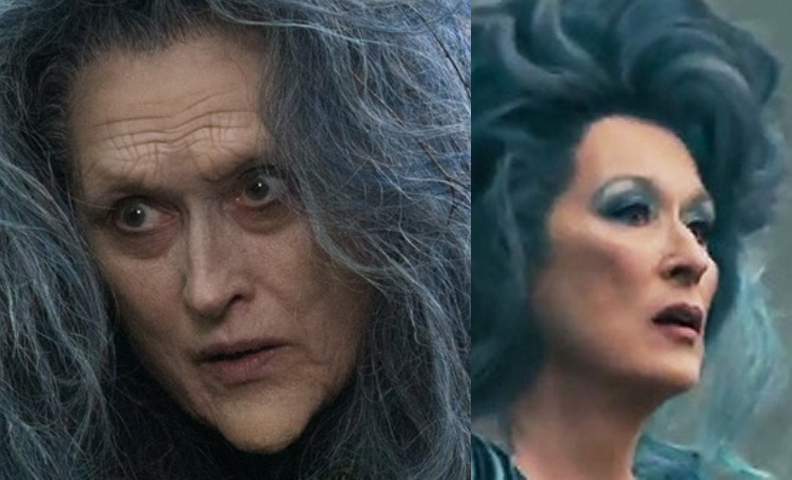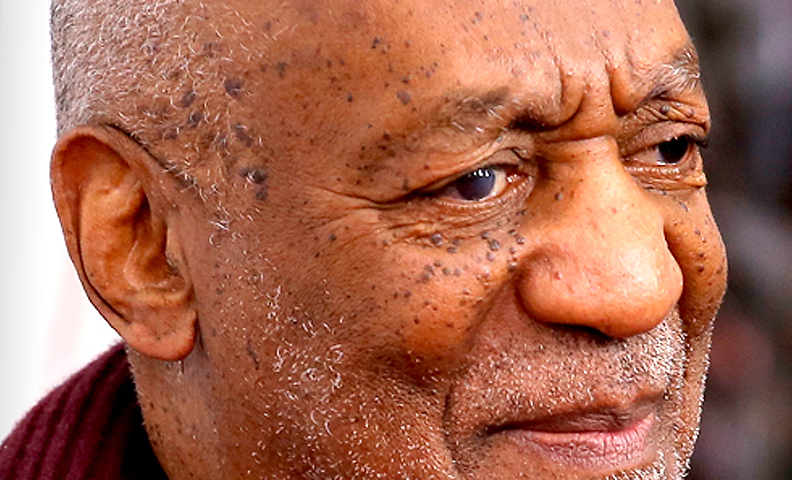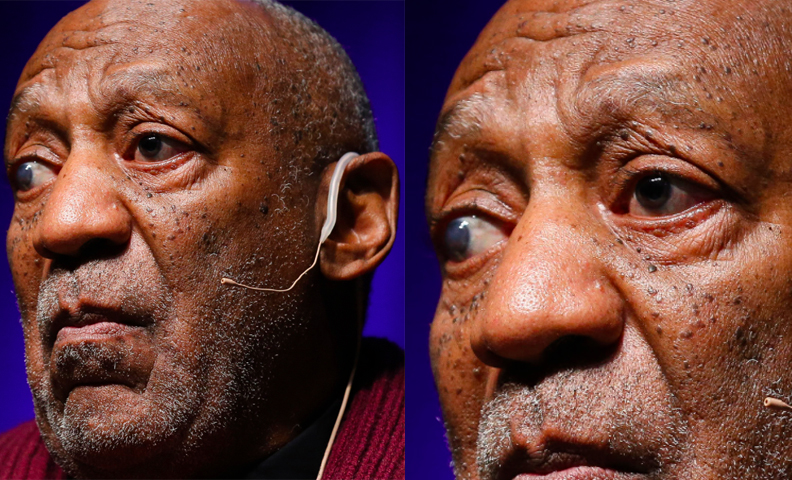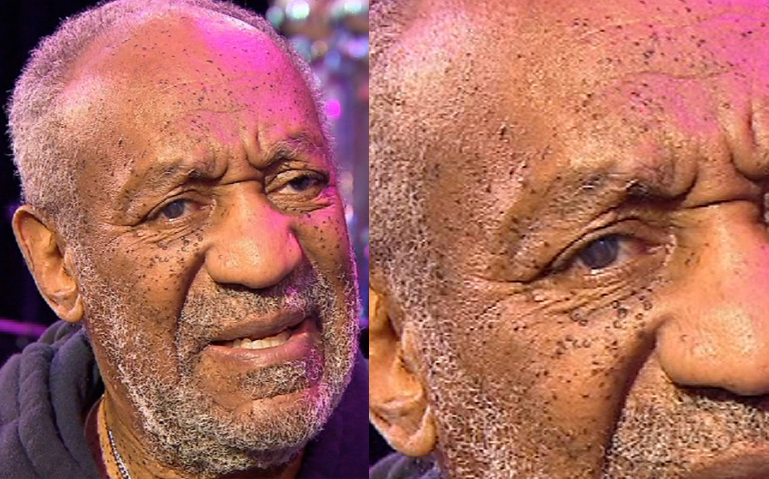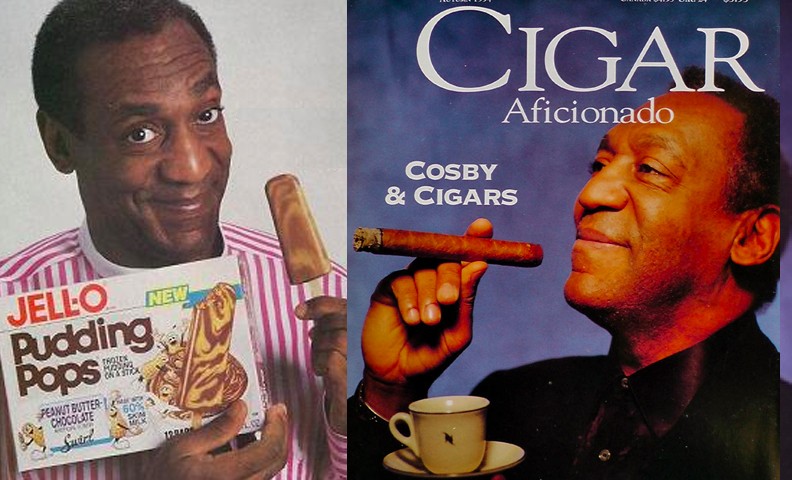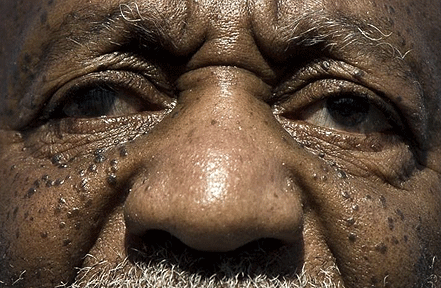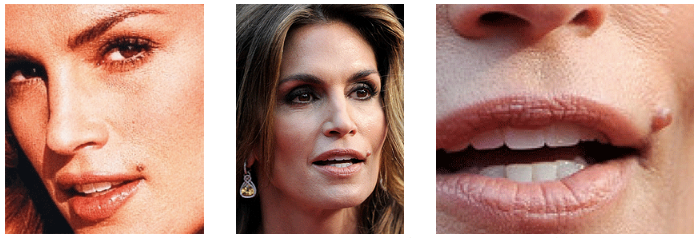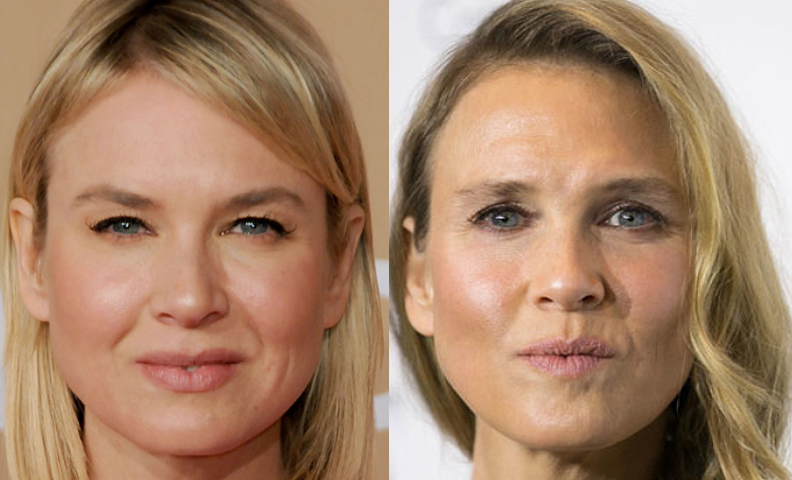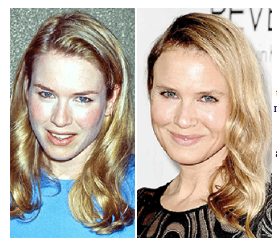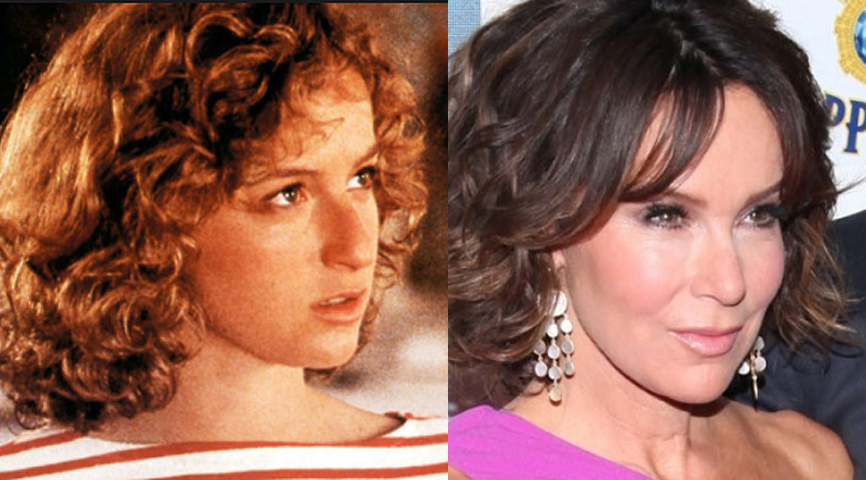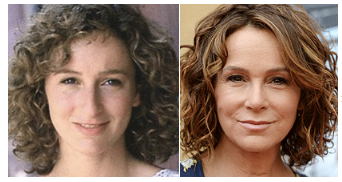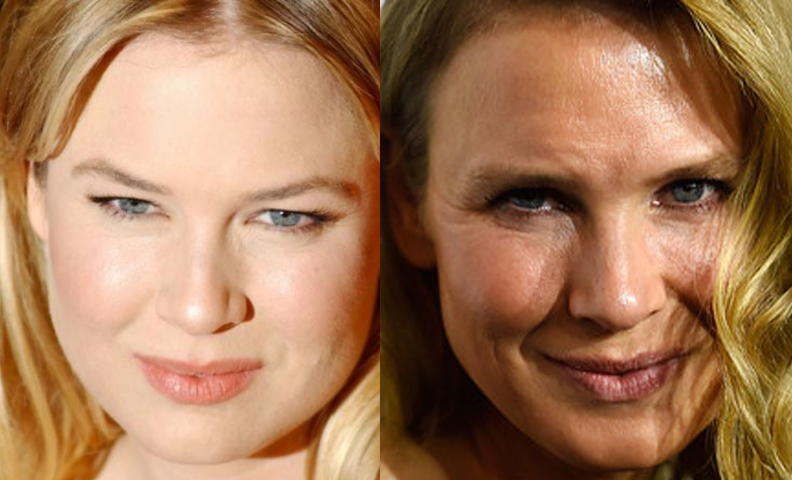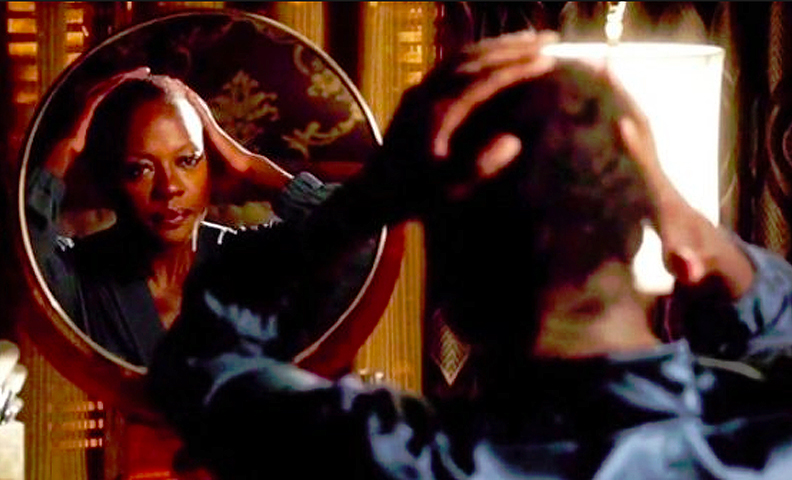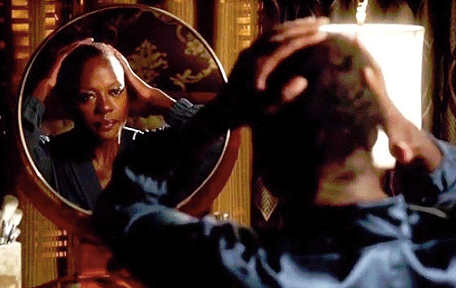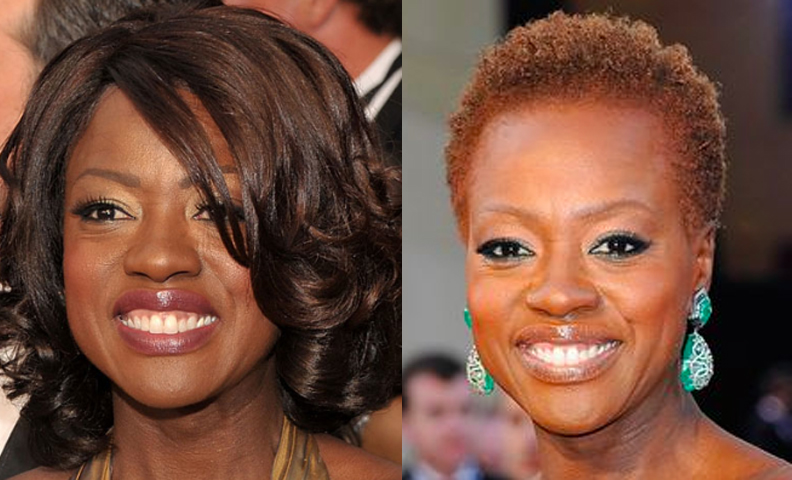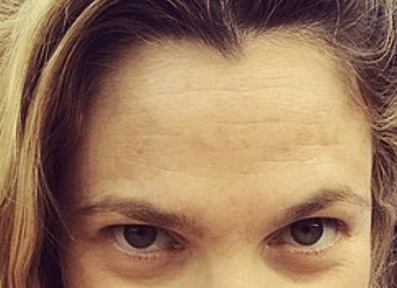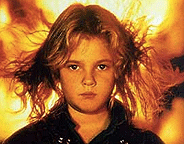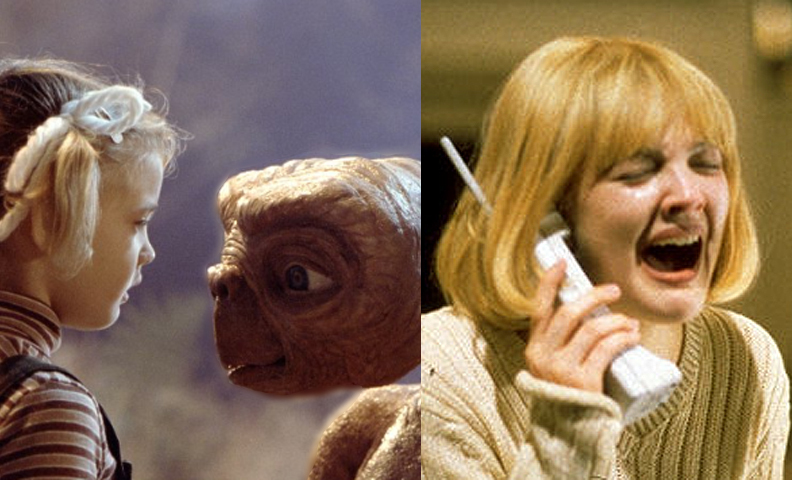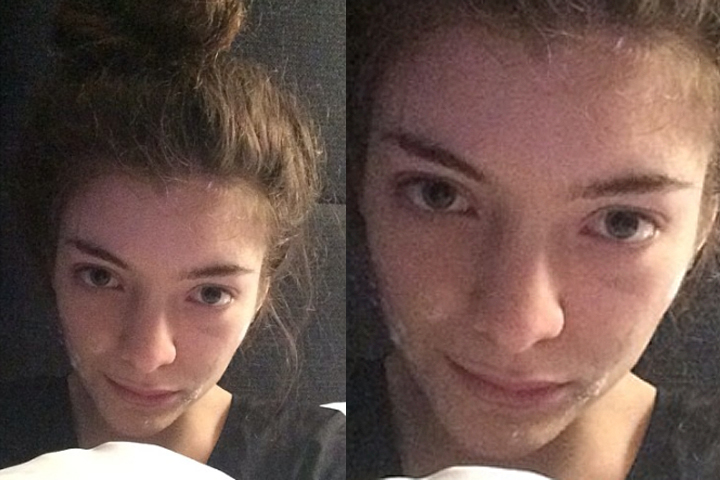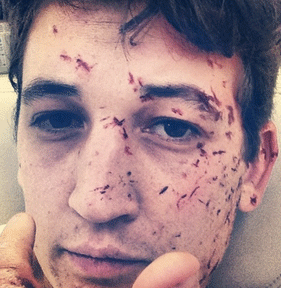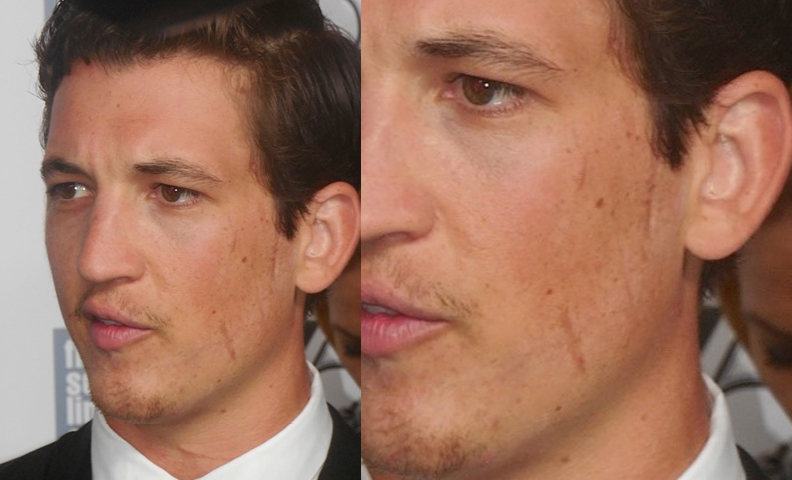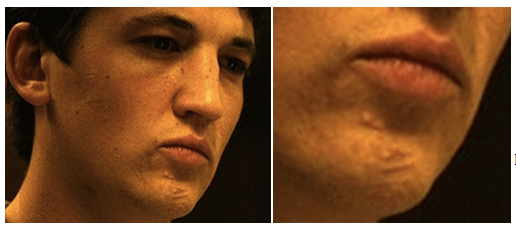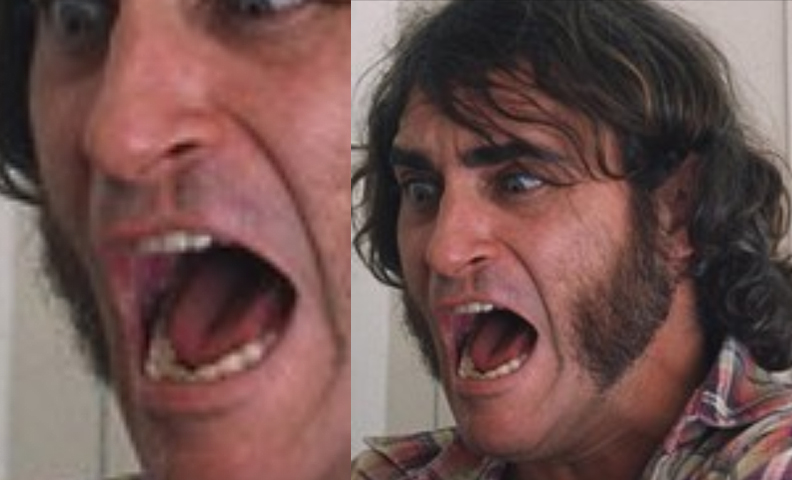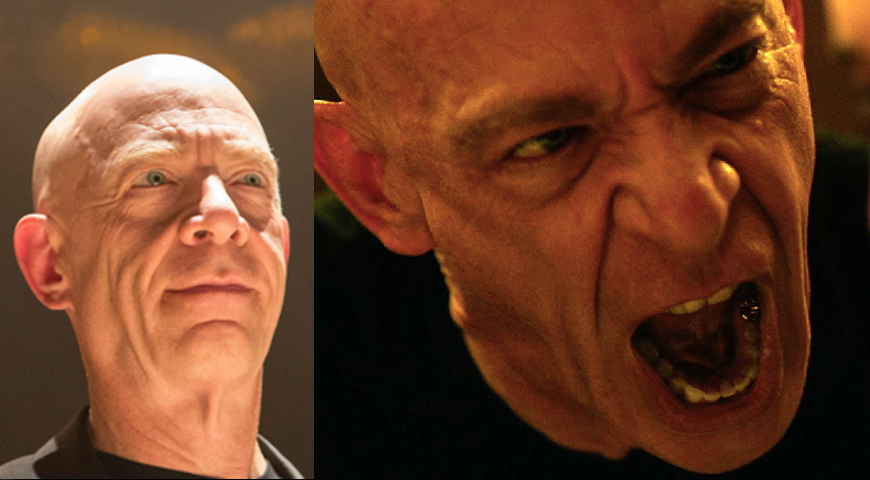Honoring epidermal excellence in entertainment.
Without further ado: The 2015 Skinnies Awards!
 The Skin-flammation Will Be Televised - Vitiligo featuring Jon Hamm & Winnie Harlow
The Skin-flammation Will Be Televised - Vitiligo featuring Jon Hamm & Winnie Harlow

2015 will herald the final episodes of the acclaimed cable drama, “Mad Men,” the story of secretive 1960’s era advertising executive, Don Draper. Gradually, audiences have learned that much of what Draper appears to be is a lie, from his initial “happy” marriage to his very identity. As portrayed by Cary Grant look-alike actor Jon Hamm, the character’s style, good looks and charisma conceal his private life. Hamm may not have a hidden side but he does have an affliction, hidden in plain sight. While he has a dab of white powder on his upper nose, note lighter than normal skin on the cheek to the right of his right eye.

Channel surf to current day reality programming: “The Next Top Model.” As glamorous women vie to achieve maximum mannequin status, one of this year’s contestants, Winnie Harlow (Chantelle Brown-Young), reveals the same disease as Hamm, usually concealed with the latest in high tech makeup techniques. These two TV personalities share a covert condition: The cosmetically challenging, immune system over-reaction known as vitiligo.

Wait! The astute Skinnies Awards spectator may blurt out: Isn’t that Michael Jackson’s disease? Short answer: Yes, with caveats, but we’ll get back to that.

Just as Don Draper’s layers of lies have been peeled away over 7 seasons, let’s clear up what we can about this conundrum. Vitiligo is an auto-immune disease, mysterious maladies where the mechanisms designed to fight off infections go awry. In this case, white blood cells designed to battle invading bacteria instead direct their misguided energies attacking pigment cells in the skin.

In turn, the color-generating melanocytes opt to stop producing pigment, creating localized, often symmetric regions of epidermis that resemble the bleached look of acid-washed jeans. Note the white patches on Hamm's hands. Usually, this means splotches of white on the face, hands and groin, but this can occasionally mean extensive bleached-appearing areas, mimicking albinism.

Why would such a thing occur? Hamm has brought up stress as a trigger, noting that his condition began at the same time as he felt mounting pressures from performing in a successful cable show. While it is clear that stress can spur “skin-flammation”, much like eczema and psoriasis, the research regarding vitiligo is not as...black and white.

There also are no clear links to diet, environmental exposures or the glare of TMZ’s flash bulbs. For some, such as reality show personality Tamar Braxton, vitiligo can be a life long issue. It is unlikely that Braxton brought this upon herself. Some things in medicine have to be attributed to bad luck or freak occurrences.

Which brings us back to Michael Jackson. MJ famously came forward with vitiligo as the cause for the gradual extensive lightening of his skin tone. There is enough current evidence to confirm that Jackson had the condition. For most with vitiligo, the pattern is of small symmetric snow-colored islands, rather than an entire milky ocean. Note in this image, Jackson still has streaks of normal brown skin. Our take is that MJ had the condition and pursued medical treatments to permanently bleach out the remainder of his skin. We will not speculate whether that was to create a consistently light tone or an effort combined with plastic surgery to alter his physical appearance for other reasons. “Dermatologist” means “skin doctor” not “psychiatrist.”

Most with vitiligo don’t opt to zap their normal skin color, but rather turn to treatments that lessen the inflammation. Topical ointments such as Protopic (tacrolimus) can safely revive melanocytes. Phototherapy treatments can been used. Unfortunately, not everyone responds to treatment and flareups can occur. Restoring pigment takes a long time, like the months spent waiting for new “Mad Men” episodes. Many women use the option afforded to models: Makeups that match the normal hue.

Kudos to Winnie Harlow. Models are pressured to follow beauty trends, which usually mean an even epidermal tone. Yet she has elected to not always conceal her condition. Throughout the show and in photo shoots, she has elected to embrace her differences. Free of camouflage makeup, her videos and layouts work as both glamour shots and out-takes from a derm textbook.

While a simple permanent cure for vitiligo continues to elude us, the finale of “Mad Men” is coming soon.

Runner up: The Skin-flammation Will Be Televised: Kevin Bull, “American Ninja Warrior” with Alopecia Universalis
Alopecia areata lives in the medical neighborhood as vitiligo, though in this case the immune cells batter hair follicles rather than pigment cells. Most sufferers have small bald patches, as Keanu Reeves can attest.
Kevin Bull, the bulked-up “American Ninja Warrior” contestant, has a rare total body variant, looking like he trained in a vat of Nair. Hair-free is not the same as talent-free, as a trapeze-style flip moved him into the finals.
Soon, there may be and option to rejuvenate his follicles. 2014 heralded a report of a novel anti-inflammatory treatment that re-grew a similar patient’s hair. As they say on TV: Stay tuned!
 Tabloid-Style Shocker - Angelina Jolie Announces She Has a Herpes Virus
Tabloid-Style Shocker - Angelina Jolie Announces She Has a Herpes Virus

Another day, another celebrity press release revealing a chronic medical condition. By taking control of the story, stars can both evoke sympathy and raise awareness. Actress, director and force for good in the world, Angelia Jolie did just that in 2013, by announcing that she undergone double mastectomy to counter her high genetic risk for breast cancer.
The Youtube vid she posted in December 2014 was intended to achieve the same result. It went viral. Literally. Jolie announced she could not attend the premiere of her second feature film directorial effort, “Unbroken,” because of an infection. A herpes virus infection.
Yes, you read it correctly. You may wonder why anyone would want to make a point of admitting to such an affliction. And why should that restrict them from the red carpet?
Turns out Jolie had been stricken with an adult case of chickenpox (varicella). In ancient times (before the mid 1990’s) this was a common childhood ailment. Kids would get low grade fevers and outbreaks of small very itchy water blisters that could scar.

Rarely, childhood chickenpox is featured in flicks. Don’t remember “Home Alone 3?” The one without Mcaulay Culkin? Then you missed an early scene where the kid gets tons of little red dots and has to stay home from school. The makeup artist must have also played hooky from Facepaint Academy because these spots look nothing like the condition’s characteristic small blisters.

This tot from “Story of Us” (1999) has a much more realistic depiction of the pesky blemishes, romantically described as “dewdrops on a rose petal” by particularly poetic physicians.
The varicella virus then clears from the skin and lies dormant in the nerves before making an unwanted comeback years later in the form of the painful band-like rash of shingles (Zoster).
Because the same virus causes both diseases, it is called the Varicella-Zoster virus or given the B-Boy acronym VZV. As in, “Yo, yo, VZV in the house!” A safe vaccine now prevents the childhood rash and a second vaccine for the 50 and over crowd limits the chance and severity of shingles.

If a grown-up was never exposed to chickenpox and were not vaccinated, the adult version of varicella can be much more aggressive, possibly affecting the lungs and brain (encephalitis). Strong antiviral pills or possibly medicines given by vein can stop the virus like North Korean hackers can stop a movie premiere.

So why the confusion about Jolie’s announcement? VZV is one of 9 viruses in a group known as the herpes virus family. Only the first two kissing cousins, HSV-1 and HSV-2 cause the condition called herpes, featuring cold sores, fever blisters and genital blistering. The remaining seven lead to chickenpox/shingles, some other childhood rashes and HHV-8 which leads to Kaposi's Sarcoma as seen in AIDS. C
onfused? You are not alone. A consultation with Dr. Google can make patients mistakenly think they have herpes when really they are coping with one of the other seven infections.
Is it time to change the name of the Herpes Virus family? There are some family names that have lost their popularity. Anybody want to join the Hitler clan? Marrying into the Manson family? Care to change your surname to Bin Laden? Thought not.

Angelina Jolie was not announcing she had herpes, yet technically chickenpox is a herpes virus (family) infection. Until this terminology is altered, confusion will remain. With anti-viral treatment, rest and support, Jolie’s career should remain “Unbroken.”

Runner up: Tabloid-Style Shocker: Meryl Streep has wrinkles!
Streep, now 65 years-old, has remained remarkably wrinkle-free. Yet in this recent image, it looks like she qualifies for a Botox touch-up. What’s that? She’s just made up as the Witch from “Into the Woods?” Mamma mia, she’s good!
 Celeb Derm-Mystery - What's Up With Bill Cosby's Spots?
Celeb Derm-Mystery - What's Up With Bill Cosby's Spots?

Comedian Bill Cosby has been an entertainment icon for decades. Via standup, movies, albums and his groundbreaking sitcom, “The Cosby Show,” Cosby has not only made audiences laugh, but has acted as a role model as well. As Dr. Cliff Huxtable, Cosby played a respected physician, a loving husband and a caring, if stern, parent. More recently, Cosby has taken upon himself the role of advisor to parents and young people, promoting responsibility, accountability and self-reliance.

Yet for the last several years, there has been a visible flaw on this public façade. Cosby’s projected perfection has been marred by a dermatological distraction. People say don’t sweat the small stuff. Yet occasionally, an icicle may really be the tip of an all encompassing iceberg. Just ask The Titanic.

The dark lesions that dot Cosby’s face are called dermatosis papulosa nigra (DPN’s), essentially “dark skin bumps.” Despite looking like contagious warts, they are not caused by a virus or any sexually transmitted disease. Though they are black and gradually grow in size and number, their presence does not portend cancer or suggest systemic health problems.

Questionable dietary choices, like over-consumption of jello pudding, or potentially risky behaviors, such as cigar smoking, play no role in their development. Found more commonly in people of color, DPN’s simply arise with advancing age. Cosby, African-American and in his late 70’s, is in the routine DPN demographic. No dermatologist would be surprised or concerned to diagnose these lesions on someone the same age and race as Cosby.

When patients elect to have DPN’s treated, the driving force is typically cosmetic, a desire for skin that is smooth and bump-free. Treatment can be performed safely and painlessly with a topical anesthetic. Low strength electric zapping, called hyfrecation, works well, some doctors also treat with lasers. Treatment is not wildly expensive. The results tend to be remarkably good, usually healing without scarring or discoloration.

This begs the question: Wouldn’t a high profile, wealthy entertainer want to consider a treatment that should be affordable, relatively painless and scar-free? Wouldn’t a face without warty looking spots best reflect an individual self-appointed to be a role model? Why wouldn’t someone in Bill Cosby’s position keep these distracting lesions at bay?

Is it possible that there is something lurking in the past, unknown acts that may never be admitted, that are creating subconscious feelings of shame? Could these benign bumps actually represent a strange, self-imposed modern day scarlet letter?

Runner up: Celeb Derm-Mystery:
What is Cindy Crawford going to do about her beauty mark?
Former supermodel Cindy Crawford single-handedly put the beauty mark back on the media map. The small dark mole provided the perfect accent to her full lips and separated her from the pack of other aspiring models.

Over time, however, facial moles tend become lumpy, raised and lose their dark color. This is current appearance of Crawford's mole. These are not dangerous changes, except on an aesthetic level.

- Shall she let the lesion continue to grow and potentially droop? Have it entirely removed, like fellow fashionista Sarah Jessica Parker? Or possibly undergo a shave procedure, flattening the lesion and restoring its dark, alluring hue? The mystery deepens...
 Jennifer Grey Award for Facial Alteration - Renee Zellweger
Jennifer Grey Award for Facial Alteration - Renee Zellweger

In the fall of 2014, there was much buzz about a celeb that had not been in the spotlight for a while—and, despite the common aphorism, not all press is necessarily good press. Current images of Oscar winner Renee Zellweger did not seem to match her previous appearance. Her characteristically squinty eyes appeared more oval. Her chipmunk cheeks were flattened, her face appeared more angular and less round. The overall effect: Less “You had me at hello” and more “Who’s that?”

This is not the first time an actress’ face was so dramatically transformed. As “Baby” in “Dirty Dancing” (1987), Jennifer Grey’s large nose dramatized an adorable awkwardness. She had a girl next door quality that let the audience root for her character. In the early 1990’s, she had initial surgery on her nose. Complications arose and a second procedure was performed. The result: Her distinctive schnozz was replaced with a generic honker.

Movie roles dried up. Grey's character in a short-lived “Friends”-like TV sitcom called “It’s Like, You Know“ was teased for having a nose job. Many now blame her floundering career on her altered proboscis. In Grey’s own words: "I went in the operating room a celebrity—and came out anonymous.”

In Renee’s case, the facial changes generated significant internet discussion. What is odd is Zellweger’s response to the public outcry about her altered appearance. Denying any cosmetic treatments, she said this instead: "I'm living a different, happy, more fulfilling life, and I'm thrilled that perhaps it shows."

Will the Zellweger’s career trajectory mimic Grey’s? We look forward to appreciating Zellweger’s further work (that’s acting work not necessarily cosmetic work).
WTF, that is, What The Freckle? How many sit-ups and bean sprouts does it take to look like another person? She is not our patient, but we can speculate that she had a surgical eye-lift and some other procedure to produce a more angular face. She may have had a conservative nose job. Some are undergoing Botox treatments to the jaw muscle for facial narrowing. Denying cosmetic work does not seem to help Zellweger’s cause.

Runner up: Jennifer Grey Award for Facial Alteration: Steve Carell in “Foxcatcher”
Actually, this would be the reverse Jennifer Grey award, using a prosthetic larger nose for Awards contention.
Don’t laugh. It worked for Nicole Kidman in “The Hours.”
 How to Get Away with Hair Loss - Viola Davis
How to Get Away with Hair Loss - Viola Davis

Hot off the heels of “Scandal,” producer Shonda Rhimes released another TV show for the Twitteratti, “How To Get Away With Murder.” Instantly, the graphic violence and male on male sex scenes generated enough tweets to blow out an aviary. #Titillating. Yet despite the gruesome deaths, cliff hangers, and explicit acts, the most tweetable moment: African-American female hair loss.

At the end of a long day of defiance, duplicity and deception, law school professor Viola Davis caught the audience off-guard by simply removing her wig. Revealing her (very) high forehead and sparse scalp coverage generated true surprise. #NotOnMyPate. It turns out that hair problems are common in the black community. As shown in Chris Rock’s excellent documentary, “Good Hair,” many factors contribute to thinning scalps in African-American women.

Tight braids, known as corn-rows, fatigue follicles over time creating frontal hair loss known as traction alopecia. Here Jada Pinkett-Smith rocks this potentially risky hairstyle. Chemicals and heat treatments used to straighten curly hair also damage scalp skin. The result is an entire industry of wigs, weaves and surgical treatments attempting to cover over a depleted forest. #TreeHugger.

That the image of Davis unabashedly revealing her hair issues is so surprising confirms that most women coping with hair loss are masters of concealment. #Hardwork. Davis has been on both sides of this struggle, long before her current show. Earlier, she strode the red carpet with long locks. More recently, she bravely sashayed sans artificial tresses.

If hairstyles that don’t involve the braiding and straightening come into favor, the risk of hair loss would dramatically decrease. Naturally curly hair looks fine on singer/actress Solange Knowles, no?

Runner up: How to Get Away with Hair Loss: Michael Keaton, “Birdman”
Michael Keaton, a former “Batman” actor, shuns all glam for his depiction of an aging actor attempting a theater comeback. While he occasionally slaps on wig for his role...
The steadicam steadily focuses on his balding pate. This type of ego sacrifice is exactly what makes an image-oriented Tinseltowners take notice.
 Honest Instagram Moment - Drew Barrymore's Facial Blotches
Honest Instagram Moment - Drew Barrymore's Facial Blotches

Honest Instagram Moment - Drew Barrymore's Facial Blotches

The rise of Instragram, the selfie-driven site that allows us all to share a virtual photo diary, has also generated raw material for an internet industry: Headlines trumpeting Stars Without Makeup. As much as we might like seeing perfect, photoshopped images of our favorite movie actors, equally appealing is the popular US Magazine slogan: “Stars—They’re just like US!” While paparazzi pics of celebs shot walking their dogs in sweatpants (the stars, not necessarily the dogs) is amusing enough, it takes a truly confident entertainment icon to record her face, blemishes and all, for internet prosperity.

Drew Barrymore remains an entertainment powerhouse. Descended from acting royalty, with her first movie appearance at the age of 3 (!), Drew is the rare child actress who has successfully segued to an adult career. She is a producer and director and her latest release as an actress, “Blended,” though critically maligned (14% on Rotten Tomatoes, Ouch!), has grossed over 126 million dollars internationally at the time of this writing.

Most film fixtures at her level command a media team as large as roller derby team to insure that any released image is covered in makeup, spritzed with hairspray and finessed with photoshop down to the smallest pixel. So we find it endearing that Barrymore would post this image two months after the birth of her second child (right):

While she exclaims that she has a flower in her drink, note the brownish discoloration that has blossomed on her forehead. This is the classic appearance of melasma, also known as the mask of pregnancy.

Like Drew’s “Charlie’s Angels” franchise, this latest flare is a sequel of sorts. She initially developed melasma after her first pregnancy and chatted about it in interviews.

Melasma is a common facial discoloration triggered by hormonal changes and sun exposure. High estrogen levels related to pregnancy or birth control pills are the major inciting factor. The blotchiness typically arises symmetrically on the forehead and sun exposed areas of the cheeks, sparing the nose and around the eyes. The ability to magically start fires plays no role with this condition.

Though not fun like a Barrymore rom-com, melasma is also not medically dangerous. Understandably, women prefer clear skin rather than hard-to-conceal blotches. Some may feel like an alien. Others may scream.

Treatment is tricky. Lasers can make the areas darker, so topical prescription or OTC creams containing hydroquinone (Tri-luma), Tretinoin (Retin-A), Azelaic acid (Finacea and Azelex) represent the usual goops of choice. Each of these has the potential for side effects, from dryness and a tingling sensation, to a full allergic reaction. Evaluation and discussion with a dermatologist should result in slow but sure fading.
The most important ingredient: Patience. In general, the best-case scenario shows fading within 2 months, but may take 3-4 months or longer. Finally, fastidious sunscreen use is paramount to prevent recurrence.

More recent Instagram posts suggest her melasma has cleared. Whether she clears her schedule of any further Adam Sandler projects remains to be seen.

Honest Instagram Moment: Lorde dabbed with acne cream
In February 2014, 18 year-old New Zealand singing sensation Lorde posted this image with the caption, “in bed in paris with my acne cream on”. The lack of caps and proper grammer should not reflect badly on the academic standards of Kiwis.
Acne is a common teen issue, so it’s nice to see Lorde bonding with her fans rather than releasing inauthentic touched-up images.
 Fearless Film Force, Flaws and All - Miles Teller's Facial Scars, "Whiplash
Fearless Film Force, Flaws and All - Miles Teller's Facial Scars, "Whiplash

The phrase “best actor of their generation” gets bandied about, but up-and-comer thesp Miles Teller earns the hype. Last year, he carried the teen drama “The Spectacular Now” as an adolescent alcoholic. He bulked up for the “Hunger Games” knockoff “Divergent” and now is getting acclaim playing a wanna-be jazz drummer in “Whiplash.” Teller’s intensity behind the drum kit is matched by his drive challenging J.K. Simmons as a sadistic band leader.
Teller’s career is speeding along right now, but there was a moment when all was shattered. We mean it, like glass.

Seven years ago, Teller was a passenger in a car wreck and was thrown through a window. He injured his shoulder, broke his wrist—but survived. The image on the right shows makeup from a scene in "Whiplash." He healed but was left with defects that could have crashed his options in the entertainment biz: Significant facial scars.

Along Teller’s cheek and chin, traumatic scarring persists. Lasers might minimize the depressed portion, but there are several and located so directly in view that even plastic surgeons would have a hard time revising them. With skill and determination, Teller has managed to turn lemons into a film career with a citrus-flavored twist.

Facial deformity doesn’t necessarily rule out movie roles. Pockmarked actors routinely find Hollywood work, but are usually delegated to playing thugs, drug dealers and prisoners. Instead, Teller’s trajectory catapults him into the leading man arena usually reserved for blemish-free beaus.

He is not the first film star to have serious facial scarring. Joaquin Phoenix is the lead in this month’s quirky indie comedy “Inherent Vice.” He had a cleft lip that healed before birth, resulting in a permanent upper lip line. Harrison Ford, returning later this year to a franchise that began a long time ago, in a Cineplex far, far away, retains his characteristic chin scar.
And last year’s Skinnies winner, Chiwetel Ejiofor, forges forward with his forehead scarring, also from an auto accident.

Future film actors can take a lesson from Teller, shown here in "Divergent," and his fellow famous, if flawed, stars. Talent, charisma and determination outweigh perfect skin at the movies.

Runner up: Fearless Film Force, Flaws and All: J.K. Simmons, hair loss in “Whiplash.”
“Whiplash” represents the battle of the derm conditions as scarred Miles Teller faces off against J.K. Simmon‘s male pattern hair loss. No wonder both look so P-O’d!
Sure, Rogaine, Propecia and hair transplantation can minimize baldness. Yet with an Oscar nomination for Simmons almost assured, we see no reason to mess with (im) perfection.
Next »
« Back
